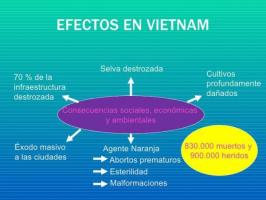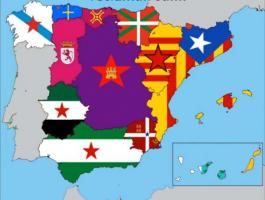Difference between unitary and federal
Unitary refers to an Argentine political party that advocated liberalism. On the other hand, federal they formed an opposition party that fought to maintain power in the Argentine provinces.
While the Unitarians fought for a centralized government, located in the city of Buenos Aires, the federals were looking for the political decentralization so that the autonomy of the provinces within the nation would be respected.
These two political parties faced each other from 1828 to 1831, during the Argentine Civil War, which originated after the country's independence. The conflict arose because there was a strong disagreement on how to organize the territory of the provinces.
| Unitary | Federals | |
|---|---|---|
| Definition | Political group that proposed the centralization of power in Buenos Aires. | Political party that sought the freedom and autonomy of the Argentine provinces. |
| Existence | From 1816 until 1862. | From 1816 until 1868. |
| Ideology | Centralism and liberalism. | Federalism. |
| Division of power | They wanted to establish a single central power (centralization). | They sought to maintain the autonomy of the provinces by delegating only certain functions to the central State (decentralization). |
| Economy | They proposed free trade to bring benefits to the central government. | They advocated the protectionism of their economic activities for the benefit of the provinces. |
| Adepts | Liberal intellectuals, great merchants and the military. | Inhabitants of the rural sectors, landowners, caudillos and some intellectuals. |
| Leaders | Bernardino Rivadavia, Juan Lavalle, José María Paz and Gregorio Araóz de Lamadrid. | José Gervasio Artigas, Justo José de Urquiza, Juan Manuel de Rosas, Facundo Quiroga. |
Who were the Unitarians?
An Argentine political party with a tendency is known by the name of Unitarians liberal, founded in 1816, which sought to have unity in the regime.
For the Unitarians, the provinces were considered simple internal territorial divisions with little autonomy, because the nation should predominate about them.
Unitarianism arises from independence centralism. In principle, it allied with Great Britain and followed Napoleonic France as an example.
The Unitarians made the first attempt to impose themselves in the year 1826, seeking to implement a form of government where the provinces lost their authority and her needs weren't a priority.
Elite supporters in Buenos Aires and some provincial capital cities supported the Unitarians, but the rural population only followed local caudillos.
Unit objectives
- A centralized government in the United Provinces of the Río de la Plata, later known as the Argentine Republic in the 19th century.
- Legislation that would unify the entire country under the same law, regardless of local traditions, culture or particularities.
- A unique port in Buenos Aires, whose customs revenues will be used exclusively in that city.
- Free trade, despite the fact that the provinces could be affected economically.
- Free navigation of European vessels on rivers with free trade to benefit from both exports and imports.
- Modernization of the financial system with a bank that issues paper money and contracting loans to carry out works.
Who were the feds?
An Argentine political party, founded in 1818, which proposed the establishment of the federalism to defend the autonomy and power of the provinces.
The Feds formed a Federal League, also known as Union of Free Peoples, taking as an example the constitution of the United States. They fought against the Unitary Party for the political organization of the country until the second half of the 19th century.
José Gervasio Artigas was the founding leader of the Union of Free Peoples, accompanied mainly by caudillos and people from the provinces. Together they opposed the dominance of the central power and the elites of Buenos Aires that restricted the independence of the provinces.
The federals intended to form a republican and federal country, then, taking into account the extension of the territory, as well as the economy and regional politics, affirmed that this model was better adapted to the characteristics nationals.
The thought of the feds was traditionalistThey defended the customs of the regions.
Goals of the feds
- Provinces or regional powers voluntarily associated with a general government in charge of some issues, such as foreign relations.
- Equal conditions, sovereignty and independence for all provinces.
- Maintenance of the traditions and cultures of rural regions.
- Economic protectionism, especially due to small local industries that could not compete with industrialized goods that were imported at low cost.
- Free navigation of the inland rivers to release provincial export products abroad and distribute customs proceeds among the provinces.
- Limitation of the dominance of Buenos Aires dominance and, consequently, prevent Buenos Aires from being the capital of the country.
Civil war between Unitarians and Federals
After the independence of Argentina, the division is made between unitary and federal. They fought for the way to command the country's politics and for the organization of the territory of the United Provinces of the Río de la Plata, today known as the Argentine Republic.
When the armistice that ended the war with Brazil (1825-1828) was signed, a centralist presidency, which originated the Civil war in Argentina from 1828 to 1831.
The caudillos of the interior faced the central power of the urban elites for the unequal distribution of power and economy between the provinces.
The malaise was felt in the provinces by the imports that arrived in Argentina, which they stole land from local products that had no outlet to the sea, making competition unfair economical.
The federal forces They obtained victory in 1931, establishing a triumvirate made up of Juan Manuel de Rosas in Buenos Aires, Javier López on the coast and Facundo Quiroga in the interior.
After the death of Quiroga, Juan Manuel de Rosas he positions himself as the senior commander of the federal government forces. He first served as governor of the Province of Buenos Aires and then became the de facto leadership of the country in 1835.
With this event, Rosas begins to persecute and exile unitary and federal leaders who are opposed his mandate, until they established themselves as the only president of the Argentine Confederation that had conformed.
His dictatorship it was brutal and ended in 1852, when his troops were defeated at the Battle of Caseros.
The winning coalition was made up of José Urquiza, governor of the Province of Entre Ríos, together with troops from Brazil and Uruguay.
After this event, in 1853, a congress made up of the provinces drafted a National Constitution declaring a Federal Republic in Argentina.



